January 31, 2018
Beautiful Art Direction and Photography for Soubois F1 GP
Beautiful Art Direction and Photography for Soubois F1 GP
Baillat. Studio published a post on their Behance profile showcasing the Art Direction and Photography work they did for the Soubois for the Grand Prix F1 in Montreal last year. I love everything about the style and mood that they set. The light and colors bring this nostalgia feeling and it also has this 70s look. I selected a few inspiring images to share here with you. Check them out!
Bailat. Studio is a graphic design and communication studio from Montreal, Canada. They have a beautiful portfolio in graphic design and photography. I highly recommend you to check them out at http://baillat.ca/
Art Direction and Photography

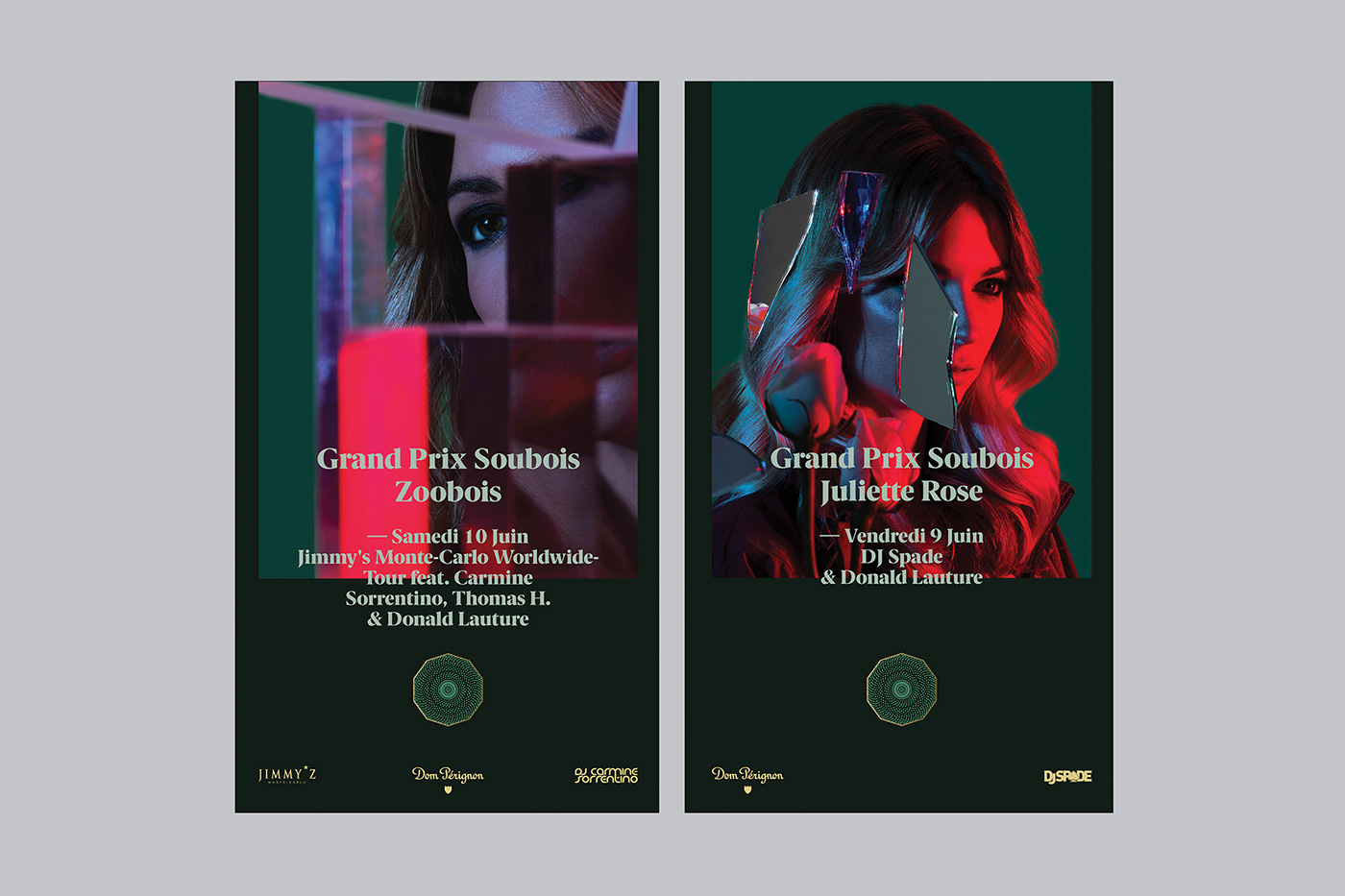



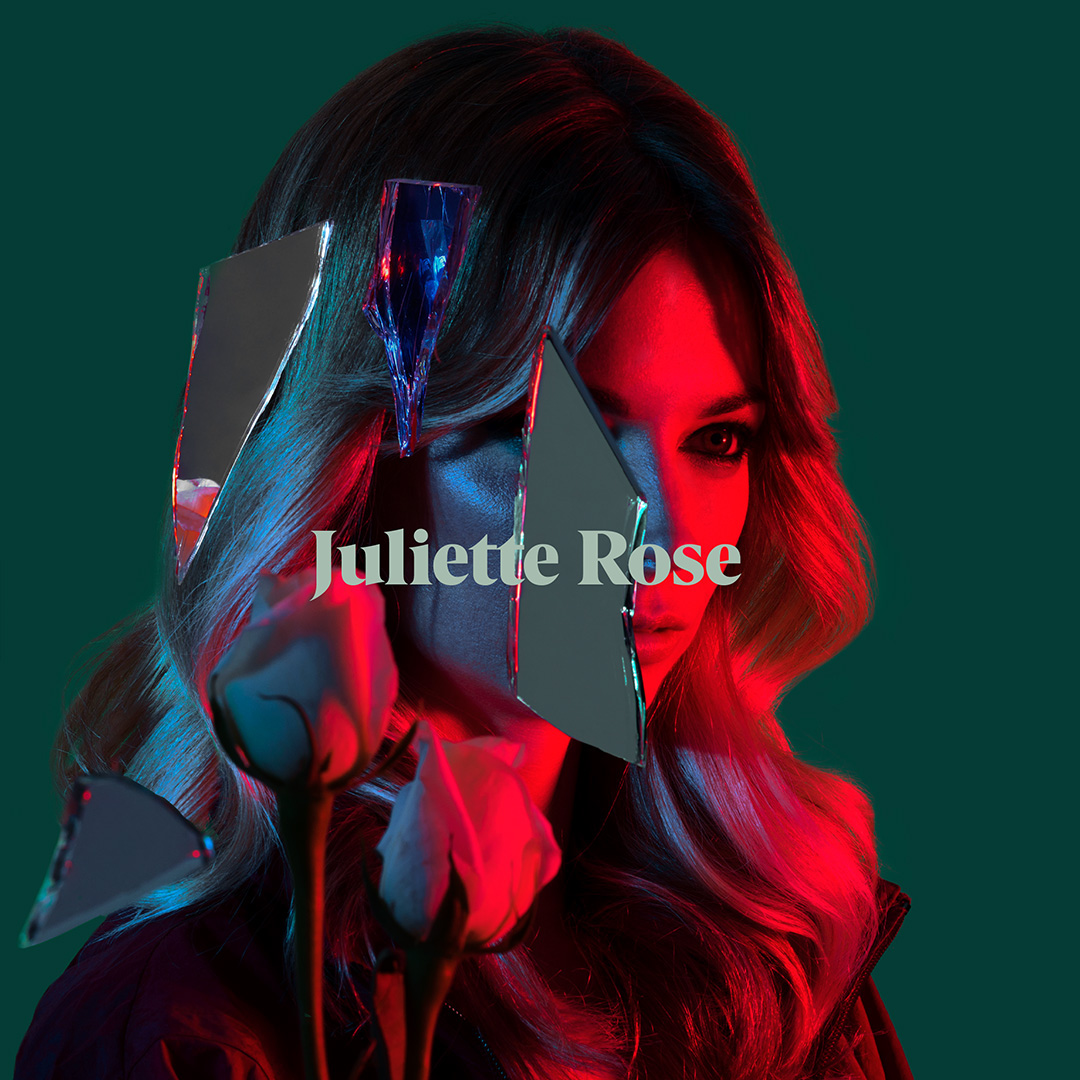

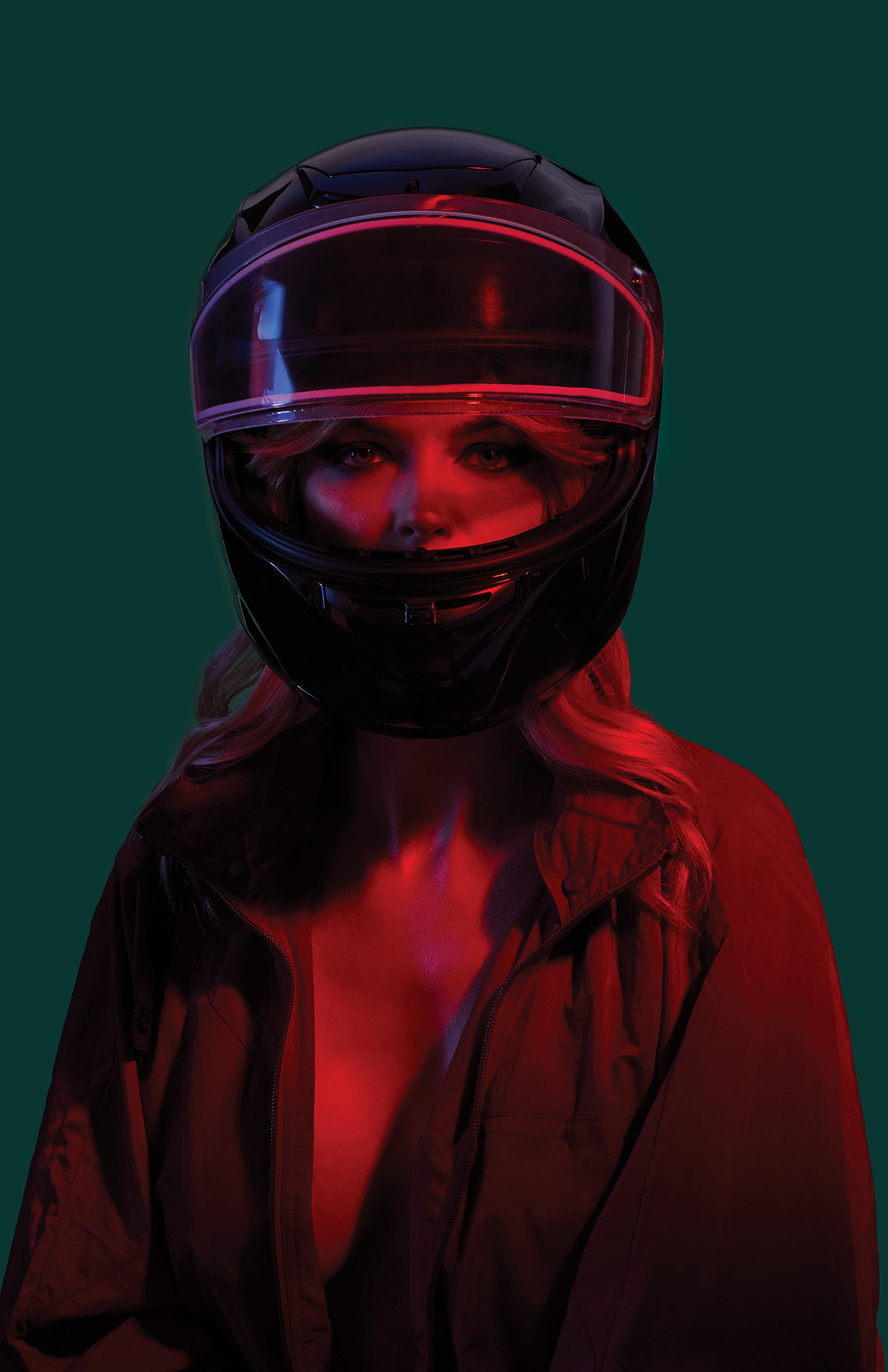



abduzeedo
Jan 31, 2018
Source: Abduzeedo Photography
January 31, 2018
UI Inspiration: This week’s selections from Matthew Sandoval, Haoming, Tony DeAngelo and more
UI Inspiration: This week’s selections from Matthew Sandoval, Haoming, Tony DeAngelo and more
It’s that time of the week for our collection of UI/UX interactions to boost your UI inspiration. We are focusing on cool animations, layout designs, UX thinking and more. We are mixing it all from static, dynamic and even live prototypes, this might be a great weekly series to bookmark! For this week, we are seeing our first Dashboard design that we haven’t seen for quite some time. We have a little bit of everything this week, hopefully you will enjoy!
In this collection we are featuring the work from Matthew Sandoval, Haoming, Tony DeAngelo, Mikolaj and more.
More Links
- For more, check out Dribbble
- Follow my tweets @aoirostudio
- Follow my pictures on Instagram
via Dribbble
 Design by Matthew Sandoval
Design by Matthew Sandoval
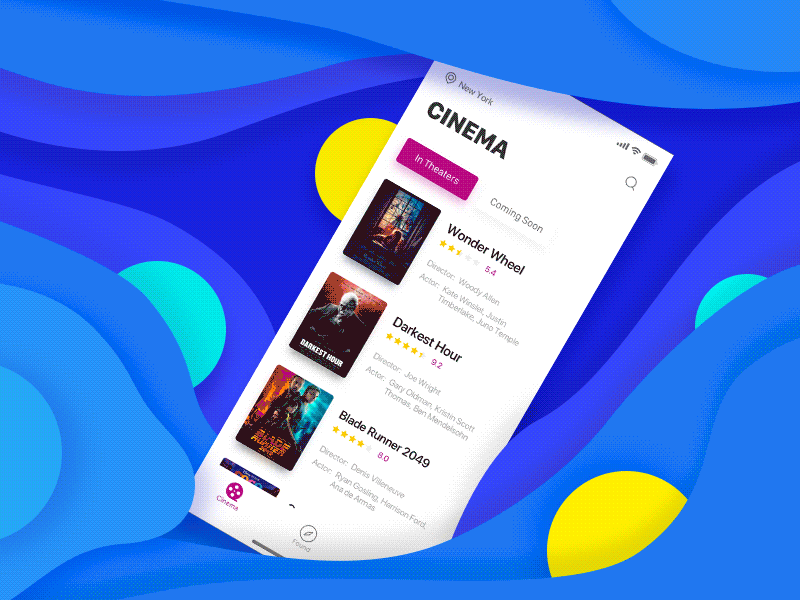 Design by Haoming
Design by Haoming
 Design by Mikolaj
Design by Mikolaj
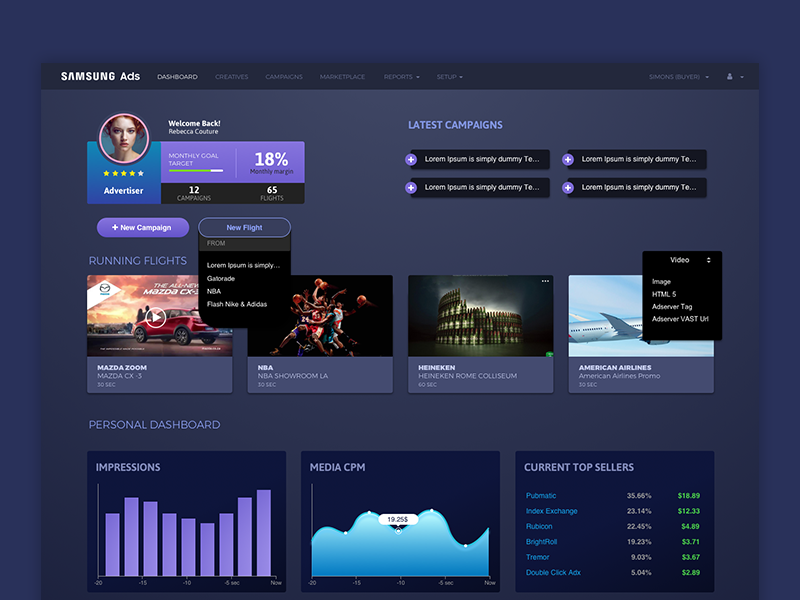 Design by Richardzon
Design by Richardzon
 Design by Dimest
Design by Dimest
 Design by rohan rahian
Design by rohan rahian
 Design by Emma Y.
Design by Emma Y.
 Design by Geio Tischler
Design by Geio Tischler
 Design by Tony DeAngelo
Design by Tony DeAngelo
 Design by Mario Šestak
Design by Mario Šestak
 Design by Sayeed Ahmad
Design by Sayeed Ahmad
 Design by Oleg Melnykovl
Design by Oleg Melnykovl
 Design by Michal Sambora
Design by Michal Sambora
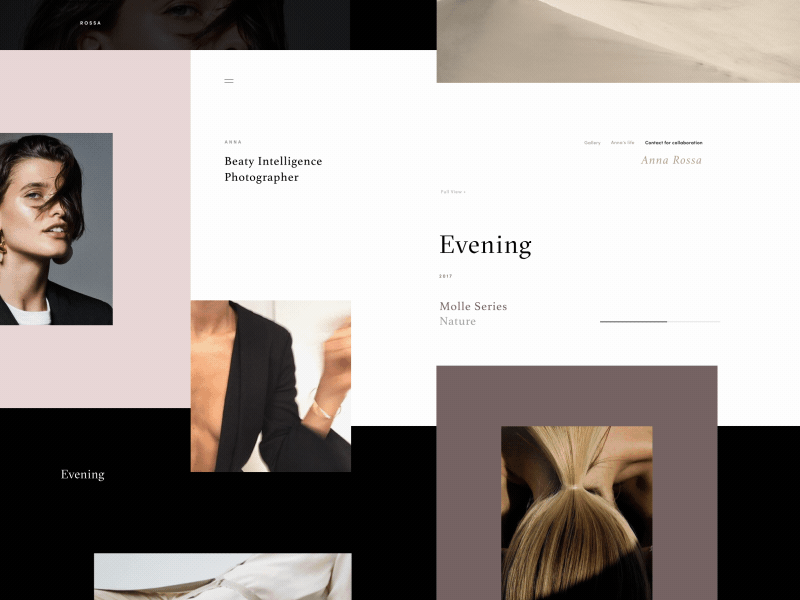 Design by Zhenya Rynzhuk
Design by Zhenya Rynzhuk
AoiroStudio
Jan 31, 2018
Source: Abduzeedo UI/UX
January 30, 2018
Positron Voyager virtual reality chair snags $1.4 million in seed funding
Positron has announced that its Voyager virtual reality chair has received seed funding totaling $1.4 million, which will bankroll the development of a second generation of the hardware.
The post Positron Voyager virtual reality chair snags $1.4 million in seed funding appeared first on Digital Trends.
Source: Digital Trends VR
January 30, 2018
Welcome the Future: Mercedes-Benz and smart Are Heading to Austin

In September 2017, Mercedes-Benz organized the first ever me Convention in cooperation with SXSW during the Frankfurt Motor Show (IAA) in Germany. Following the success of the event, Mercedes-Benz is taking the next step: together with smart, they’re bringing the me Convention experience to SXSW 2018.
From March 9–15, 2018, the me Convention will be co-hosting the SXSW programmed content in the Intelligent Future Track at Fairmont Hotel, providing a platform for those shaping our future to #createthenew.
The main hub, however, will be at the iconic Palm Park. Excellent hospitality in a stylish environment provides the ideal setting for networking, meetings, and an open discussion about our future. Whether you want to dive in or just kick back and relax, you can experience the spirit of the me Convention right here in Austin with live streams, speakers, food courts, yoga sessions, and workshops in a festival-like atmosphere.
Additionally, smart will be providing SXSW visitors with a spot for urban innovation and relaxation. Don’t let the world pass you by! Catch seven days of electric discovery and intelligent diversions in the “tiny house of smart” at Palm Park. At the Hilton Hotel you can find the “tiny cube of smart” where smart showcases its successful “smart urban pioneers” startup program aiming to make city life easier.
Join the conversation – together we can shape the future!
Image and content provided by Mercedes-Benz and smart
The post Welcome the Future: Mercedes-Benz and smart Are Heading to Austin appeared first on SXSW.
Source: SxSW Interactive
January 30, 2018
Frank And Oak’s locally Made Wool Suiting Campaign Illustrations
Frank And Oak’s locally Made Wool Suiting Campaign Illustrations
Ever since the last feature of Amanda Mocci on ABDZ, she has been crafting her work so beautifully. It can be seen in Fast Company, books and in her personal exploration where I feel she is shining the most. There is so much depth and the contrast is being shown to a whole new level. For the new, Amanda Mocci is an art director and artist based in Montreal, QC. We are sharing a series of illustrations she shared for Frank And Oak, a very popular Men’s Clothing & Women’s Styles. They were promoting their locally Made Wool suits for Men and as you can see. It’s just amazing!
New illustrations created for Frank And Oak’s locally made wool suiting campaign. It was so much fun to work on these! Many thanks to the awesome team at Frank And Oak
More Links
- Learn more about Amanda Mocci at amandamocci.com
- Follow Amanda on Facebook
- Follow Amanda on Instagram
- Previous Feature on ABDZ
Illustration
AoiroStudio
Jan 30, 2018
Source: Abduzeedo Illustration
January 29, 2018
How to Get Started with Instagram Storytelling
Watch my video recording on the
Visual Storytelling Today show:
On the road?
You can also listen to my audio podcast of this episode.
Subscribe to the Visual Storytelling Today podcast on iTunes or Google Play
With all the latest talk about Facebook changing their newsfeed’s algorithm and the inevitable comparisons to Instagram (aka maximal vs. minimal design approaches), I’d like to focus our upcoming Visual Storytelling Today show on Instagram and how visual storytellers like you can take advantage.
As Alexis C. Madrigal aptly defines Instagram in a recent article on The Atlantic:
“Instagram does not pretend to be part of the public sphere. It is not the natural home of #theresistance. It’s a place for the Sunday’s-best version of your personal life to have space on the internet.”
Instagram is one of the fastest platforms that experienced a tremendous growth in recent years. With over 800 million users as of September 2017 – that translates into 1 out of 3 US Adults have an Instagram Account.
And marketers did take notice. In fact, 70.7% of US businesses are using Instagram in 2017, exceeding Twitter for the first time.
According to a recent New York Times article:
“One study, published by researchers at the University of Oregon in 2016, found that the use of image-based platforms like Instagram and Snapchat was associated with lower levels of loneliness among users, and higher levels of happiness and satisfaction, while text-based platforms had no correlation with improved mental health.”
So, if you find yourself using Instagram more as a way to unwind vs. text-based platforms like Facebook and Twitter, then there is some truth in these research findings.
With this in mind, our upcoming guest is Julie Cabezas, a co-founder of The Ideal Marketing Agency based here in South Florida. Julie has loads of expertise transforming brands into what she calls “Little Black Dress Brands” on Instagram.
Here is a sneak preview of what we’ll cover in our upcoming chat:
How would you pitch the benefits of Instagram to business leaders?
Instagram is all about relevancy. Instead of visiting a company’s website, many consumers now check Instagram to get a feel for the company’s worldview. Instagram shows customers in a very real way, how the brand relates to your customer’s life.
What are the typical business objectives marketers could use Instagram for?
People really don’t want to see brand information on Facebook. The culture is about family and friends – hence the radical shifts Facebook is making to their algorithms. On Instagram, it’s completely the opposite. That’s where we want to keep up with our favorite brands. On Instagram, your brother’s trip to Mexico is actually slightly less interesting than the content your favorite brands and celebrities are posting. So I think Instagram, and platforms like it, are the future of the brand-consumer connection.
Where do you see the future of Instagram storytelling headed?
Instagram storytelling is going to be – not only the visual pulse of the world – but the new wave of publishing. I’m not sure why anyone would buy a magazine these days when you can follow your favorite magazines on Instagram and get much fresher content.
Ready to become a Pro Instagram Storyteller?
Transform your marketing results with our Instagram storytelling workshop.
Schedule a complimentary discussion today!
Already have questions you want our guest
to address during the show?
Sweet! Tweet your questions using: #myVSI
Source: Visual Storytelling
January 28, 2018
Elton John announces his retirement tour with an amazing kaleidoscopic VR video
Elton John, the original Rocket Man, revealed plans for his three-year Farewell Yellow Brick Road tour with a spectacular virtual reality experience that showcases the flamboyant and iconic rock star’s decades-long career.
The post Elton John announces his retirement tour with an amazing kaleidoscopic VR video appeared first on Digital Trends.
Source: Digital Trends VR
January 28, 2018
Sundance Documentaries Were First-Rate, But That Doesn’t Mean They’re Coming to Theaters
What makes a documentary suited to a theatrical release—and all the expense and effort associated with it? And when are they more appropriate for smaller screens? After several straight months of disappointing box-office sales for most nonfiction films, including several hits from last year’s Sundance, this question would seem to be a pressing one out of this year’s film festival. But the answer—as evidenced by the few distribution deals that closed before and during Sundance, those that are still pending, and those that should be—isn’t so easy to nail down, though some combination of topicality, celebrity or artistry certainly comes into play.
Before Sundance kicked off, Oscar-winner Morgan Neville’s Mister Rogers film “Won’t You Be My Neighbor?” was one of the few documentaries to already have a major theatrical distributor (Focus Features) behind it—and its rapturous Park City unveiling appeared to justify it. Unlike its description might suggest, the film transcends the standard bio-pic format to become a highly resonant and timely look at America’s culture wars. Who would have thought that a Republican cardigan-wearing Presbyterian-trained minister with a message of tolerance and civility could be our best response to the current President? Set to ignite political debate at the same time as it soothes liberal arthouse audiences, it was one of the festival’s most uniformly embraced docs.
Magnolia Pictures’ mid-week acquisition of “RBG,” a lively, though conventional portrait about Supreme Court Justice Ruth Bader Ginsburg, is also instructive. While the film offers a straightforward and hagiographic account of the judge’s rise through the ranks of America’s patriarchal institutions and her close marriage with Martin Ginsburg, there’s nothing particularly captivating here—except for the fact that it’s a rousing activist cry for one of the year’s most significant issues: Women’s rights. If Magnolia’s release of “I Am Not Your Negro” was able to capture last year’s “Get Out”/Black Lives Matter zeitgeist, “RBG” will only become more relevant as Trump continues to attack her and search for her replacement—a fact that makes this documentary one of the festival’s most timely.

“RBG”
For a more punk-rock feminist portrait, there was the Joan Jett film “Bad Reputation,” another chronological survey of a life’s upswing within a male-dominated system. Though likely to play better to the musician’s fan base, the rock-doc also taps directly into the contemporary women’s power movement, showing the life of Jett as a female trailblazer who didn’t give a damn and paved the way for women in the music industry.
There were many—probably too many—other profiles of famous people, including “Jane Fonda in Five Acts” and “Robin Williams: Come Inside My Head,” both set for HBO broadcast, as well as traditional portraits of director Hal Ashby (“Hal”)) and artist Yayoi Kusama (“Kusama – Infinity”). What makes these nonfiction films more befitting a night out at the movies versus cozying up with them on the couch?
Among the best of the HBO docs, “King in the Wilderness,” a compelling and astutely constructed archival-driven look at the last contentious years in the life of Martin Luther King, Jr., stands out precisely because it’s not biographical tribute, but a focused chronicle of a combustible time when the stakes reached a fever pitch for the Civil Rights leader. But while “King in the Wilderness” is riveting and relevant to the persistent struggle for racial equality, its historical framework may limit its theatrical prospects.
On the other hand, “Three Identical Strangers,” purchased by Neon mid-week, reflects what it takes to make a film break out without celebrities or timely issues. Reminiscent of last year’s Sundance true-conspiracy docs “Tickled” and “Icarus,” “Strangers” has that WTF-mystique built into its sensationalistic narrative of triplets separated at birth who only learned of each other when they were 19-years-old. But what begins buoyantly, full of fun ‘70s reenactments and archival footage of their brief time in the limelight (they appeared briefly with Madonna in “Desperately Seeking Susan”), eventually turns darker and, as a result, becomes a more enriching and emotional experience about fathers and sons, nature versus nurture.

David Kellman, Eddy Galland, and Bobby Shafran in “Three Identical Stangers”
Courtesy of Sundance Institute
This year’s U.S. Documentary Competition, as always, had its fair share of straight-up advocacy docs (“Inventing Tomorrow,” “Dark Money,” “The Devil We Know,” “Kailash”), all of which will find their niche audiences. But the future of the section’s most cinematic docs is uncertain: Robert Greene’s “Bisbee ‘17,” an elegiac and captivating journey into American history, identity, and division, as enacted by a small Arizona town; RaMell Ross’s “Hale County, This Morning, This Evening,” a strikingly photographed, impressionistic study of black rural Southern life; and Michael Dweck’s “The Last Race,” an operatic Gates of Heaven-inspired look at stock-car racing and its fading Long Island community.
If any of this year’s non-fiction achievements should be experienced on the big screen, it’s these. You can also add in Sandi Tan’s World Documentary Competition title “Shirkers,” a film critic’s darling, which features cineastes and lots of classic film clips, as it follows the filmmaker’s quest to uncover the truth behind her mentor, and the unfinished independent movie he stole from her years before. But it’s unclear if theatrical distributors will take a risk on this type of film. Is aesthetic creativity and mastery enough to propel it into cinemas?
There were other competition docs that shrewdly combine sensitive observational filmmaking with larger social agendas, such as the excellent “On Her Shoulders,” “Crime + Punishment,” and “Minding the Gap.” In each case, the filmmaker takes a central issue and deepens it with penetrating explorations of character. In “On Her Shoulders,” director Alexandria Bombach tracks ISIS victim-turned-activist Nadia Murad in her campaign to raise awareness for her ethnic group’s devastation, but the film’s quieter in-between moments and intimate portraiture powerfully expresses the painful slog and personal psychological toll of making social change.
Similarly, Stephen Maing’s “Crime + Punishment” is an essential investigative documentary about corruption in the NYPD department, whose illegal quota policies continue to disrupt communities of color, but the film comes alive with its empathic look at its whistleblowing cops, particularly Edwin Raymond, a well-spoken officer who eloquently speaks truth to power. Bing Liu’s “Minding the Gap” also skillfully balances social issues with compelling characters as it follows several years in the lives of a group of skateboarding male friends in the Midwest as they grapple with the legacy of family abuse. In previous years, the strength of content in these three films may have been enough to push them into wider distribution, but nowadays, it may not be enough.

Kendale McCoy in “America To Me”
Courtesy of Sundance Institute
But maybe the definition of “theatrical” matters less these days anyway. Consider that two of the biggest nonfiction productions at Sundance, hailing from Oscar-nominated filmmakers Matthew Heineman and Steve James, respectively, are TV projects. Heineman’s multi-faceted expose of the opioid crisis through the eyes of the growers, addicts, cartel bosses and law enforcement officials will premiere on Showtime on February 2. And in the largest documentary deal of Sundance, Starz reportedly paid $5 million to acquire James’ 10-part series “America to Me,” a binge-worthy longitudinal study of race—and racial disparities—in education as seen through the microcosm of one large suburban Chicago high school, and its cast of eminently engaging students and teachers. If Heineman and James don’t need theaters, maybe the rest of Sundance’s doc-makers don’t, either.
Source: IndieWire film
January 28, 2018
‘Blaze’ Review: Ethan Hawke Directs a Gonzo Indie Country-Western Opera About an Unsung Legend — Sundance 2018
Some people never get to realize their full potential, or stick around long enough to do what they were so clearly put on this Earth to do. Maybe they die young, or maybe they just keep getting in their own way. Or maybe, if they’re anything like singer-songwriter Blaze Foley, they find a way to do both, burning out like stars that leave their light behind. But Foley never wanted to be a star, shining only for itself. He wanted to be a legend, and live forever. Thanks to Ethan Hawke’s slippery, whiskey-soaked biopic of the late musician — and newcomer Benjamin Dickey’s casually spellbinding lead performance — he’s closer than ever to getting his wish.
Described by its director as a “gonzo indie country-western opera,” “Blaze” is sleepier and more bittersweet than Hawke might have you believe, less of an opera than an acoustic requiem for a ramblin’ man. Flowing backwards and forwards through time like a set list, this languid tribute might frustrate anyone hoping for a conventional portrait in the style of “Walk the Line,” but there’s something ineffably honest to Hawke’s freeform approach. The contours of Foley’s legacy were as soft and imprecise as the contours of his body, and there’d be no way to measure his life in ticket sales, venue sizes, or the handful of unforgettable live recordings he committed to tape before he was killed in 1989.
So Hawke wisely decided to ditch the womb-to-tomb approach and re-imagine Foley’s journey as a fragmented story of paradise lost. Lucinda Williams once said that “Blaze Foley was a genius and a beautiful loser,” and co-writer Sybil Rosen is the living embodiment of what he lost (this movie was adapted from her memoir). Played by a tender and emotionally limpid Alia Shawkat, Rosen meets Foley at a theater program somewhere in Arkansas, and the unlikely romance that develops between the petite Jewish girl and the hulking singer from the Deep South forms the most important and involving of the film’s various threads.
Draped in shades of autumnal brown and left to unfold with the gentle patience of domestic bliss as Foley and Rosen squirrel themselves away in the woods, these scenes are the heart and soul of a movie that does a better job of illustrating love than loss. Dickey and Shawkat have a relaxed and lived-in vibe together — his voice drawls out in deep scoops of countrified wisdom, and she curls up inside them — and their relationship is the kind that somebody sings about for the rest of their days. It’s the strongest part of a life that’s held together with duct tape (Foley’s adhesive of choice), and it’s genuinely painful to watch it pull apart.
The film’s other two points of focus are both located after that split, though Hawke cuts between all three of them with increasingly little rhyme or reason. One is set some years later in the back of Austin’s Outhouse bar, where a gloriously bearded Foley plays his most famous show to an empty room in the middle of the day. Every song triggers another memory, most of them taking us back to the woods. These scenes feel more like a seance than anything else, as Dickey so completely disappears into the role that it feels like Foley has come back to life for another devastating rendition of “Picture Cards Can’t Picture You” (it’s such a remarkable feat of reanimation that it makes Gary Oldman’s performance in “Darkest Hour” look like an “SNL” sketch). These scenes are drunk with sadness, Foley in particular, and provide Hawke’s story a beacon to return to whenever the telling gets a bit too unmoored.
The final thread finds two of Foley’s closest pals— musicians Zee (Josh Hamilton) and Townes Van Zandt (a perfectly cast Charlie Sexton) — conducting a posthumous radio interview for their late friend. The interviewer has never even heard of Blaze, and so Zee and Van Zandt begin spinning some yarns of their own. This is how the movie allows for a hazy subplot in which Steve Zahn, Sam Rockwell, and Richard Linklater(!) play a trio of dumbass cowboy record executives — it doesn’t amount to much, but it sure is fun to watch.
Shambling on for more than two hours of disjointed memories, “Blaze” isn’t in much of a hurry to put the parts of a life together. The film isn’t a jigsaw puzzle, where every piece neatly fits into a greater whole; it’s more like a drunken night of people sitting around and remembering their old friend, warts and all. The upside of this impressionistic approach is that it allows for a kitchen sink kind of storytelling, paving the way for all sorts of detours, like a one-scene cameo from Foley’s senile dad (played by Kris Kristofferson, of course) and a handful of long jokes that all add some real texture to a bygone era of outlaw folk.
The downside is that Foley tends to slip away from us as the movie goes on. We can see that he’s living like he’s not going to be alive much longer, but the slipstream narrative keeps us on the outside — just like everyone else — desperate to understand how he could be so sweet and self-destructive all at once. Hawke keys in to the banality of Blaze’s behavior, the world shrugging this guy off this mortal coil in the end, but the film leaves us with almost as little as he did: just a few great songs, some scattered moments of sullied joy, and the unfulfilled wish that it had all come together in a more meaningful way.
Grade: B-
“Blaze” premiered in the U.S. Dramatic Competition at the 2018 Sundance Film Festival. It is currently seeking distribution.
Source: IndieWire film
January 28, 2018
Meet Netflix’s Indie Content Team, at Sundance and Beyond
On opening night of Sundance 2018, writer-director Tamara Jenkins premiered her new film “Private Life” to rave reviews. The New York drama was headed for derailment when she submitted it to Netflix Indie Content directors of content Ian Bricke and his lieutenant Matt Levin; they loved her script about an infertile middle-aged couple (Paul Giamatti and Kathryn Hahn) desperately trying to have a child by any means necessary. The drama turned out so well that Netflix is holding it for the fall festival circuit.
Among those in Eccles Theater seeing “Private Life” for the first time was Netflix chief content officer Ted Sarandos. That’s because if a film is budgeted under $10 million, he delegates full greenlight authority to Bricke, who pushed the $9 million “Private Life” into production and approved the last-minute casting of unknown actress Kayli Carter.
Netflix Indie Content is also bringing (if not to a theater near you) Charlie Kaufman’s adaptation of Iain Reid’s bestseller “I’m Thinking of Ending Things,” which he will direct. They’re also preparing to release a new collaboration with “Green Room” director Jeremy Saulnier, the father-daughter story “Hold the Dark,” starring Alexander Skarsgard and Riley Keough.
Clearly, Netflix is leaning into under-served audience segments. In the NIC 2018 pipeline are five features from female filmmakers: Nicole Holofcener’s suburban mid-life crisis dramedy “The Land of Steady Habits,” starring Ben Mendelsohn and Connie Britton; Haifaa Al-Mansour’s African-American self-discovery dramedy “Nappily Ever After,” starring Sanaa Lathan; Lauren Miller Rogen’s comedy “Like Father,” starring Kristen Bell and Kelsey Grammer; writer-turned-director Marja-Lewis Ryan’s heroin drama “6 Balloons,” starring “Broad City” star Abbi Jacobson and Dave Franco; and Olivia Newman’s Sundance Labs project “First Match,” set in the world of a New York girls’ high school wrestling team.
There’s also “The Raid” director Gareth Evans’ return to Wales with crazy period horror thriller “The Apostle,” and “Eggplant Emoji,” which Bricke described as an “outrageous boy comedy, ‘Superbad’ with a severed penis,” he said. “You can be successful by being specific, without the P&A risk.”
Sarandos has placed Indie Content under the supervision of Original Films head Scott Stuber, who oversees such bigger-budget films as Will Smith-starrer “Bright,” Angelina Jolie’s “First They Killed My Father,” Bong Joon-ho’s “Okja” and Martin Scorsese’s “The Irishman.” Stuber approves Indie Content films over $10 million and carries his own greenlight authority.
“We saw there was a real audience for all shapes and sizes of movies,” said Bricke, “even modestly budgeted films in the Duplass zone. The economics of buying after-market from distributors tends to drive up the cost, and we had a challenge getting access on a worldwide basis. So we said, ‘Let’s engage early to help the movies get made, and have access to all rights.’”
Being able to acquire worldwide rights isn’t always easy. Which is why over the past few years, Netflix has slowly increased the number of its in-house productions. At about 20-25 films a year, Netflix’s Indie Content division produces more than a major studio; however, few of these titles surface at film festivals or theaters. (Some might define these programmers as TV movies.)
For example, the Duplasses produced Hannah Fidell’s 2015 romance “A Teacher,” starring Taissa Farmiga; Mark Duplass produced, wrote and starred in Alex Lehmann’s “Blue Jay” (2016) with Sarah Paulson; dystopian “Io” (2017) starred Margot Qualley as a girl deciding whether to remain on an abandoned Earth; and Josh Charles plays a coach in “Amateur” (2017), starring Brian White as a basketball star, among countless small Indie Content titles most of Netflix users have never heard of.
The only way Bricke and Levin’s small staff (which gets support from the larger motion picture operation) can handle this volume is by paying close attention to development — and then letting things go. Their chief of physical production, indie producer Jeremy Walker (“Half Nelson, “Sugar”) is also on the case. Clearly, Sarandos has to delegate to his TV and film teams to keep the content churning through the system, as the level of production keeps rising, year after year.
In any case, Netflix acquisition czar Matt Brodlie did not end up buying anything at Sundance 2018, partly because he didn’t have to.
The rules of engagement at Netflix Indie Content are the same as any specialty studio: Match the budget to its audience. Of course, Netflix doesn’t have the friction of luring people to a brick-and-mortar cinema, and they boast the ability to reach multiple niche audiences via targeted, sophisticated marketing and those mysterious algorithms, created by some 1,500 engineers.
“You present a movie to an audience in personalized ways based on viewer behavior,” said Levin. “When creating artwork for the platform, we have 15-20 pieces leaning into different thematic and graphic elements. It lets you talk about the movie in different ways.”
How did these films do? Some suggest that movies get lost in the ether when they disappear into the endless Netflix content maw. To the contrary, says Bricke, these films have a long tail, pulling viewers long after they first appeared on the site. “We keep finding pockets of audience for movies,” he said. What that means, of course, is anyone’s guess: We will never know the numbers.

“Private Life”
At Sundance 2016, writer-director Macon Blair pitched Bricke and Levin the dark romance “I Don’t Feel At Home in This World Anymore,” which swiftly went into production that February. Less than a month after the film won the Grand Jury prize at Sundance 2017, it was on the streaming service. “Normally film fans all around the world hear about a new Sundance discovery and want to see that movie,” said Levin, “and have to wait six months [or more] to see it in that territory, missing out on the window when it was in the zeitgeist.” (They claim the film was a huge success.)
The other NIC titles at Sundance 2017 were Gerard McMurray’s black-college fraternity story “Burning Sands,” Sydney Freeland’s teen heist comedy “Deirdre and Laney Rob A Train,” and Charlie McDowell’s sci-fi thriller “The Discovery,” starring Robert Redford, Jason Segal, and Rooney Mara.
This year, Netflix brought another four titles to Sundance, two from NIC: Joshua Marston’s African-American drama “Come Sunday,” starring Lakeith Stanfield, Jason Segel, and Chiwetel Ejiofor and David Wain’s National Lampoon biopic “A Stupid and Futile Gesture” starring Will Forte and Emmy Rossum; both earned mixed reviews. Netflix Original Documentaries’ Lisa Nishimura brought series “Wild Wild Country” and the feature “Seeing Allred.” By the very next weekend, true to pattern, “A Futile and Stupid Gesture” was available on the site and in a smattering of Netflix partner iPic theatres.

“I Don’t Feel at Home in This World Anymore”
The Netflix advantage extends to presenting their movies simultaneously around the world in 190 countries, with subtitled and dubbed versions in 30 languages. “We knew we could find an aggregated audience all over the world for movies that felt small or specialized that wouldn’t necessarily get to travel in the conventional distribution system,” said Bricke. “Maybe the audience for a Duplass film in Scandinavia is small, but it’s there.”
Netflix also says it doesn’t have to cater to the tastes that drive foreign sales companies. Among the hits Bricke and Levin cite from last year were two Stephen King movies that debuted at Fantastic Fest’s 2017 edition: “Gerald’s Game,” starring Carla Gugino as a woman trapped in a room after husband Bruce Greenwood suddenly dies, and “1922″ starring Thomas Jane. “Mike Flanagan wanted Carla Gugino,” said Levin, about the director of “Gerald’s Game.” “It’s about casting the actor meaningful to the audience it’s for, like an actor from Doctor Who that’s resonant in that market. Compromising creatively is not a great way to make a movie.”
Clearly, Netflix is betting heavily on Indie Content, and is only going to keep ramping up the volume and budgets under ex-studio player Stuber’s direction. How he manages quality control and marketing and branding these titles — which can’t all go to festivals — is the major question going forward.
Source: IndieWire film




